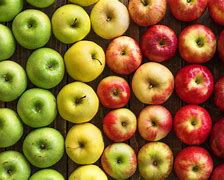If you see any of the following ingredients listed in the nutrition label, don't buy the product. Leaving these foods behind on the shelves will give grocery stores and food manufacturers a wakeup call that informed consumers will not purchase foods with the following additives.

Ingredients: Coloring agents (blue 1, blue 2, yellow 5, and yellow 6)
Found in: Cake, candy, macaroni and cheese, medicines, sport drinks, soda, pet food, and cheese
Why the U.S. allows it: We eat with our eyes. "Recent studies have shown that when food manufacturers left foods in their natural, often beige-like color instead of coloring them with these chemical agents, individuals thought they tasted bland and ate less, even when the recipe wasn't altered. This may explain why the use of artificial dyes-the most popular being red 40, yellow 5, and yellow 6-have increased five-fold since 1955.
Health hazards: Back in the day, food coloring came from natural sources, such as saffron and turmeric. "Today most artificial colors are made from coal tar, which is also used to seal-coat products to preserve and protect the shine of industrial floors. It also appears in head lice shampoos to kill off the small bugs.

Ingredient: Olestra (aka Olean)
Found in: Fat-free potato chips
Why the U.S. allows it: Procter & Gamble Co. took a quarter century and spent a half a billion dollars to create "light" chips that are supposedly better for you. They may need another half a billion bucks to figure out how to deal with the embarrassing bathroom side effects (including oily anal leakage) that comes with consuming these products.
Health hazards: "This fat substitute appears to cause a dramatic depletion of fat-soluble vitamins and carotenoids, robbing us of the vital micro-nutrients many countries, including the U.K. and Canada, have banned it.

Ingredient: Brominated vegetable oil (aka BVO)
Found in: Sports drinks and citrus-flavored sodas
Why the U.S. allows it: BVO acts as an emulsifier, preventing the flavoring from separating and floating to the surface of beverages.
Health hazards: Because it competes with iodine for receptor sites in the body, elevated levels of the stuff may lead to thyroid issues, such as hypothyroidism, autoimmune disease, and cancer. BVO's main ingredient, bromine, is a poisonous chemical that is considered both corrosive and toxic. It's been linked to major organ system damage, birth defects, growth problems, schizophrenia, and hearing loss, which explains why it's been nixed in more than 100 countries.

Ingredient:Potassium bromate (aka brominated flour)
Found in: Rolls, wraps, flatbread, bread crumbs, and bagel chips
Why the U.S. allows it: This flour-bulking agent helps strengthen dough, reducing the amount of time needed for baking, which results in lowered costs
Health hazards: Made with the same toxic chemical found in BVO (bromine), this additive has been associated with kidney and nervous system disorders as well as gastrointestinal discomfort. While the FDA has not banned the use of bromated flour, they do urge bakers to voluntarily leave it out."

Ingredient: Azodicarbonamide
Found in: Breads, frozen dinners, boxed pasta mixes, and packaged baked goods
Why the U.S. allows it: While most countries wait a week for flour to naturally whiten, the American food processors prefer to use this chemical to bleach the flour ASAP.
Health hazards: It's not enough to just ban this product in Singapore. You can get up to 15 years in prison and be penalized nearly half a million dollars in fines for using this chemical that's been linked to asthma and is primarily used in foamed plastics, like yoga mats and sneaker soles.

Ingredients:BHA and BHT
Found in: Cereal, nut mixes, gum, butter, meat, dehydrated potatoes, and beer
Why the U.S. allows it: "Made from petroleum [yummy!], these waxy solids act as preservatives to prevent food from becoming rancid and developing objectionable odors.
Health hazards: California is the only state that recognizes the U.S. National Institute of Health's report that BHA is may be a human carcinogen, a cancer-causing agent.

Ingredients: Synthetic hormones (rBGH and rBST)
Found in: Milk and dairy products
Why the U.S. allows it: Gotta keep moo-ving things along. Dairy farmers inject cows with genetically-engineered cow growth hormones to boost milk production by about 10 percent.
Health hazards: "Cows treated with these synthetic hormones often become lame, infertile, and suffer from inflamed and infected udders. Humans, who consume these cows byproducts, are in no better shape. "The milk is supercharged with IGF-1 (insulin growth factor -1), which has been linked to breast, colon, and prostate cancers."

Ingredient: Arsenic
Found in: Poultry
Why the U.S. allows it: Big brother FDA permits arsenic in chicken feed to promote growth, improve efficiency in feeding the birds, and boost pigmentation. "The arsenic affects the blood vessels in chickens and turkeys, causing them to appear pinker and, therefore, fresher.
Health hazards: The European Union has outlawed the use of arsenic since 1999 and the Environmental Protection Agency classifies inorganic arsenic as a "human carcinogen." Take matters into your own hands by sticking to organic birds only.

Ingredients: Diphenylamine (aka DPA)
Found in: Apples, apple juice, applesauce, pears, and baby food
Why the U.S. allows it: That glossy sheen that gives apples that delicous look to them. Well the European Food Safety Authority (EFSA) just deemed this coat, which seals in DPA (a mixture of chemicals that protect the fruit from blackening or browning during long months in storage), as poison. "DPA is what lets us buy apples any time of the year, especially in this country, even though they are harvested in the fall.
Health hazards: One of the issues with DPA is that the chemicals can break down and form nitrosamines, which are carcinogenic. Further research is needed to prove that DPA isn't cancer-causing but until then, the EFSA is saying no to DPA.
Source: Shape Magazine

Comments